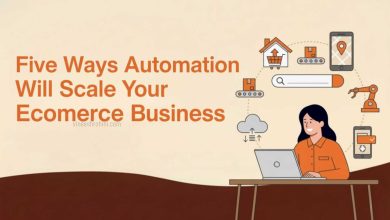What is a Micro SaaS Business ? : Comprehensive Guide 2025
What is a Micro SaaS Business : In the ever-evolving world of digital entrepreneurship, one term that’s rapidly gaining traction is Micro SaaS. For developers, solopreneurs, and bootstrapped founders, Micro SaaS businesses offer a lean, low-cost path to recurring income without needing VC funding or massive infrastructure. Unlike traditional SaaS companies that often require large teams and hefty capital, Micro SaaS products focus on niche markets, serve specific problems, and are built and managed by individuals or small teams. In 2025, as remote work, automation, and digital consumption rise, the Micro SaaS business model stands out as one of the most promising paths for online entrepreneurs.
Table of Contents
This comprehensive guide to Micro SaaS in 2025 will explore the meaning, benefits, examples, how to build one, key challenges, tools you need, marketing strategies, and future trends. If you’re looking to build a profitable, scalable, and location-independent business with high margins and minimal overhead, this guide is for you.
What is a Micro SaaS Business?

A Micro SaaS (Software as a Service) business is a lightweight, highly specialized software product typically built and run by a solo founder or a small team. Unlike large SaaS companies like Salesforce or HubSpot, Micro SaaS targets a narrow niche or micro-market, solving a very specific pain point.
Key Characteristics of Micro SaaS:
- Built and maintained by a solo founder or a very small team
- Targets a specific niche audience
- Minimal funding requirements; often bootstrapped
- Recurring revenue model (usually via monthly or annual subscriptions)
- Low overhead and high profit margins
- Often built on top of existing platforms (like Notion, Shopify, Slack, etc.)
- Can be run remotely and automated with minimal input
In short, Micro SaaS is the “indie hacker’s dream”, offering sustainable income without the complexity and scale of traditional tech startups.
Why Micro SaaS is Booming in 2025
- Low Startup Cost
With cloud infrastructure, open-source tools, and no-code platforms, it’s cheaper than ever to build and launch a SaaS product in 2025. Entrepreneurs can validate an idea, build an MVP (Minimum Viable Product), and start acquiring users without burning capital. - Rise of Solopreneurship
Freelancers and solo founders are looking for automated income streams. Micro SaaS fits perfectly into this vision—set it up once, and with the right maintenance and marketing, earn recurring income for years. - Niche Markets Are Profitable
With increasing competition in broad SaaS categories, niches like podcast editing automation, real estate CRM tools, and invoice generators for freelancers are now goldmines. Users prefer tools that solve their specific problems rather than bloated general platforms. - Global Remote Work
In 2025, more people are working from home and running digital businesses. Micro SaaS enables remote-friendly operations without physical infrastructure. - Accessible Tech Stack
No-code tools, AI integration, and cloud platforms have removed barriers. Anyone with basic technical skills can create a Micro SaaS with tools like Bubble, Webflow, Airtable, and ChatGPT-powered APIs.
Examples of Successful Micro SaaS Products
- Plausible.io – A privacy-friendly G Analytics alternative, built by a small team and generates recurring income from a loyal customer base.
- Storemapper – A simple store locator tool used by Shopify businesses. Built by a solo founder and later sold for six figures.
- Bannerbear – An automated graphic design tool that helps generate images from API calls. Perfect for social media and marketers.
- EmailOctopus – A low-cost email marketing SaaS with a clean UI, ideal for small businesses and creators.
- UptimeRobot – A website uptime monitoring tool, serving a specific function with a simple pricing model.
Also Read : How to Make Money With AI Tools
These examples show how Micro SaaS solves one problem extremely well and still brings in thousands to millions in recurring revenue.
How to Start a Micro SaaS Business in 2025

Step 1: Identify a Profitable Niche
- Solve a specific pain point for a targeted audience.
- Browse forums (Reddit, IndieHackers, Quora), explore freelancing gigs, or interview professionals in a niche to find underserved problems.
Step 2: Validate Your Idea
- Build a landing page explaining the solution.
- Collect emails via a waitlist form.
- Offer a no-code prototype or MVP to beta users.
- Use platforms like Product Hunt, Twitter, and Reddit to get early feedback.
Step 3: Build the MVP
- Use no-code or low-code tools like Bubble, Glide, Softr, or traditional frameworks like React/Node.js.
- Focus on the core features only.
- Integrate payment systems like Stripe or Razorpay for monetization.
Step 4: Launch Publicly
- Publish on Product Hunt, Hacker News, Reddit, Indie Hackers
- Reach out to niche bloggers, newsletters, or influencers
- Use cold outreach or LinkedIn DMs for your target customer base
Step 5: Get Paying Users
- Offer free trials, money-back guarantees, or a freemium model
- Focus on onboarding—walkthroughs, tutorials, or welcome emails
- Optimize your pricing strategy over time
Step 6: Maintain & Improve
- Gather user feedback and prioritize features
- Add basic support channels (live chat, FAQ, helpdesk)
- Use analytics tools to track behavior and conversion rates
Tools and Tech Stack for Micro SaaS in 2025
No-Code / Low-Code Development
- Bubble
- Webflow + Memberstack
- Glide
- Airtable
- Appgyver
Frontend/Backend Tech
- Next.js, React
- Firebase, Supabase
- Node.js
- PostgreSQL or MongoDB
Payment Gateways
- Stripe
- Razorpay (India)
- Gumroad or Paddle
Email and Marketing
- Mailchimp
- ConvertKit
- EmailOctopus
- Customer.io
Support and CRM
- Crisp
- Tawk.to
- HelpScout
Analytics
- Plausible
- PostHog
- G Analytics 4
Marketing Your Micro SaaS
1. Content Marketing
Write blogs, create SEO-optimized landing pages, publish case studies, and tutorials. Tools like Jasper AI and Surfer SEO can help scale content production.
2. SEO Optimization
Target long-tail keywords relevant to your niche. Use tools like Ahrefs, Ubersuggest, or SEMrush to find what your target audience is searching.
3. Social Proof
Collect testimonials, user reviews, and video case studies. Publish them across landing pages and marketing materials.
4. Community Engagement
Answer questions in relevant Facebook groups, Reddit forums, and Quora. Host AMAs or join Twitter Spaces to share your expertise.
5. Paid Ads (when profitable)
Run G Search or Meta ads with niche-specific targeting. Only spend when you know your CAC (Customer Acquisition Cost) vs LTV (Lifetime Value) works.
6. Influencer Outreach
Find micro-influencers or bloggers in your niche. Offer free trials, affiliate commissions, or partnerships.
Benefits of Micro SaaS Business
- Recurring Revenue: Monthly subscriptions bring predictable income
- Low Risk: You can start with minimal investment and scale slowly
- Lean Team: Often run by one person or with 1-2 remote helpers
- Time Flexibility: Once automated, you have freedom to focus on growth or build more products
- Ownership: You fully control the product and its direction
- Scalable: Many Micro SaaS tools can grow to 6–7 figure annual revenues
Challenges in Building a Micro SaaS
- Churn Management: Customers might cancel if the tool isn’t valuable enough
- Customer Support: Even with a small base, support can eat up time
- Technical Debt: Without a team, maintenance can become tough as the product scales
- Marketing Knowledge Gap: Many developers underestimate the time and skill needed to acquire users
- Competition: Niches can quickly become crowded if others enter with better funding
But the good news is: with the right mindset, lean execution, and a deep understanding of your audience, Micro SaaS can thrive even in competitive spaces.
Future of Micro SaaS in 2025 and Beyond
- AI Integration: Tools using ChatGPT, GPT-4, and similar APIs will power smarter automation
- Micro Integrations: Many Micro SaaS products will plug into larger ecosystems like Slack, Notion, Shopify, Airtable
- Niche B2B Tools: There will be a rise in SaaS made for hyper-specific industries like vet clinics, indie game studios, or podcast networks
- SaaS-as-a-Service: Expect platforms that let users build their own Micro SaaS without writing a line of code
- Indie SaaS Acquisitions: Micro SaaS businesses with stable recurring revenue will become attractive assets for acquisition
What is a Micro SaaS Business – Conclusion

Micro SaaS is not just a trend—it’s a business model built for the future. In a world dominated by complexity, Micro SaaS offers simplicity, control, and scalability. Whether you’re a developer tired of freelancing, a digital nomad looking for passive income, or a creator with a deep niche insight, building a Micro SaaS business in 2025 could be your gateway to financial and creative freedom.
Buy Now : Top 300 AI Tools List
From low overheads and high margins to direct customer relationships and remote operation, Micro SaaS is ideal for today’s lean, fast-moving entrepreneurial landscape.
Disclaimer : The information provided in this guide is for educational purposes only. Please consult with legal, tax, or financial professionals before starting your own business. Your success depends on various factors including effort, niche, timing, and market demand.
Keywords : What is a Micro SaaS Business – What is a Micro SaaS Business 2025 – What is a Micro SaaS Business Guide



